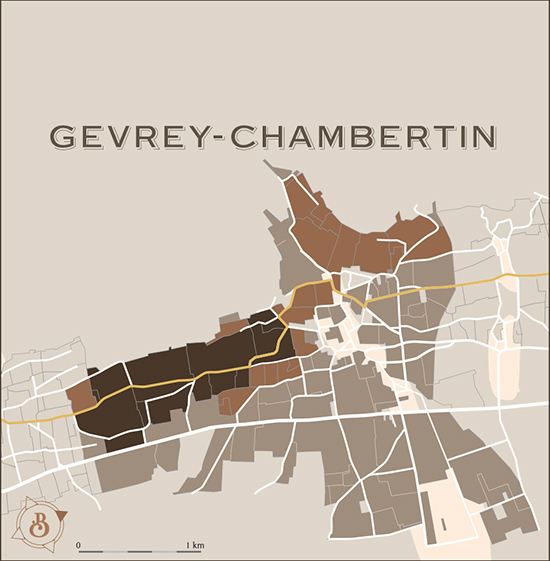Gevrey-Chambertin 2023
The name has prestigious overtones, and the place itself is about as noble as they come. To say the least, Gevrey-Chambertin is where the the real Burgundy Grands Crus begin…
Origin
Gevrey-Chambertin is a large town located at the northern end of the Côte de Nuits. It boasts one of the largest surface areas under vine with no fewer than 330 hectares under production. The vines are planted at altitudes of between 240 and 280 metres. The soil is limestone-based with a high proportion of clay marlstones from the scree of the Combe de Lavaux, giving power and roundness to the wines.
Our Gevrey-Chambertin comes from the bleding of two parcels: "Billard on Brochon" but also a climate called "Aux Echezeaux", on the border with the appellation Morey-Saint-Denis located under the Mazoyères-Chambertin.
Viticulture
Grape variety: pinot noir
Soils: different types: brown limestone, sandy and very poor soil composed of gravel.
Orientation: South-East
Surface area under vine: 1.1918 ha
Pruning: Guyot system
Yield: 22 hL/ha
Average age of the vines: 41 years old.
Vinification
Harvest date: 14 September 2023.
The grapes were handpicked. They were sorted a first time in the vineyard and again on the sorting table when they arrived at the winery.
At the winery: the grapes were 50% destemmed but not crushed (they were left whole) and were gravity-fed into tanks. Total maceration lasted a total of 16 days including 2 days of cold maceration (12°C). Fermentation used indigenous yeasts only (no additives such as enzymes or tannins were used). 1 punching of the cap.
Ageing
Maturation: aged on the lees for 14 months with no racking using a proportion of 33% new French oak barrels.
Barrels: French oak barrels that had been toasted at low temperatures for a long time for very delicate oaking.
Bottling
Bottling: by gravity on December 18, 2024, wine fined with bentonite, very light lenticular filtration.
Number of bottles: 2,697.
Vintage
Fruity and generous
The 2023 vintage experienced unpredictable weather conditions, making work in the vineyards essential for grape quality. Harvesting began in early September under intense heat with the Chardonnays to avoid over-ripening, followed by the reds. The whites will spend two winters in the cellar, while the Pinot Noirs will have undergone short ageing to preserve the fruity aromas. A vintage that brings out the best in each terroir, offering wines that are bright and delicious.
Ageing potential: from 6 to 9 years.
Tasting notes
With its bright ruby color, this wine reveals notes of blackberry, fresh leather and a touch of black pepper on the nose. On the palate, it is structured and serious, carried by firm tannins that offer a full-bodied finish.



